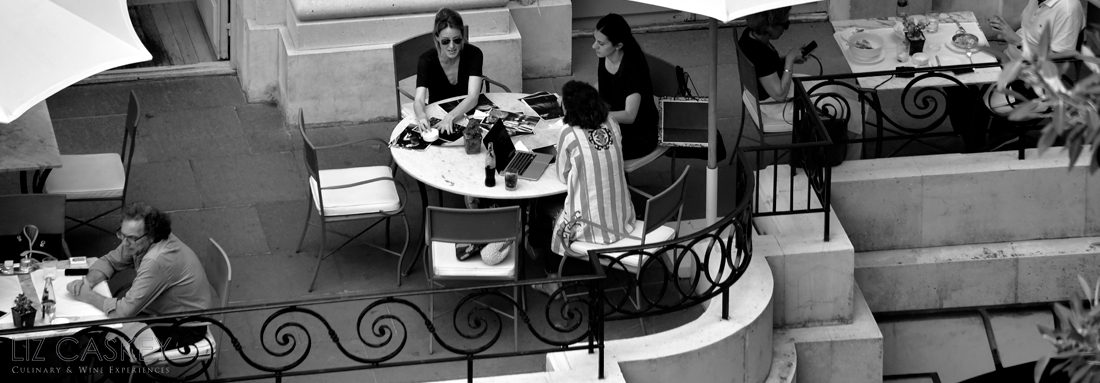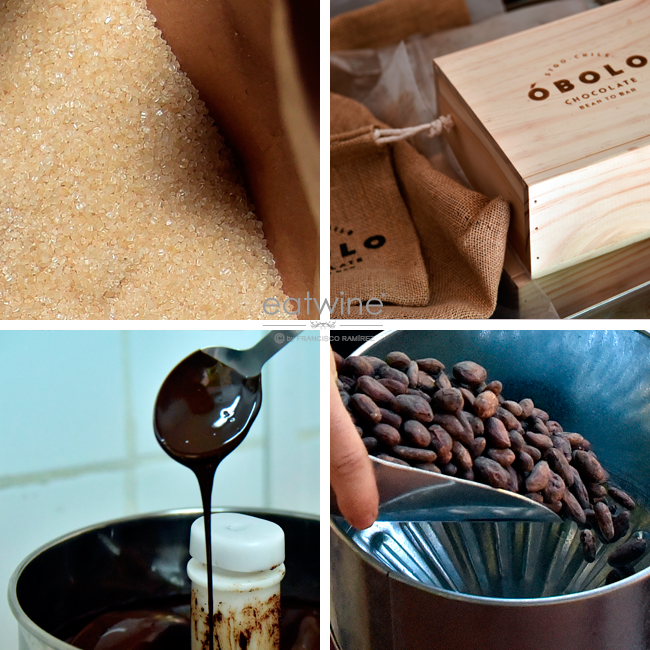
Meet Mark Gerrits. He’s the energy, and passion, behind Chile’s first bean-to-bar chocolate: ÓBOLO. Made right here in Santiago de Chile.
ÓBOLO is provoking a long-awaited, and very necessary, revolution in chocolate here in Chile. Prior to existing, chocolate was imported and mostly manipulated into sweet bonbons with remelted European chocolate. ÓBOLO is turning that playing field upside down. It’s Chile’s first, and only, bean-to-bar chocolate project. That means a bar of ÓBOLO chocolate only contains two ingredients: (organic) cacao and cane sugar.
ÓBOLO’s name is symbolic. Meaning gift, a synonym of regalo in Spanish, its origins can be traced back to ancient Greece where it also was the word for a coin. Fittingly, prior to the Spanish arrival to the New World, the cacao bean was used as currency for trade in Mesoamerica. Gerrits also adds that, “I have a lot to be thankful and grateful for. I am in debt for everything that Latin America has given me in the past 20+years. I would like to be able to say thanks and pay back a bit, and ÓBOLO is a way of doing it. If I can contribute by inspiring a tectonic shift in the chocolate culture in Chile, improving quality and connecting the consumers to its roots in the rainforest, then that will be my grain of sand to the country.”
So how did a gringo like Mark get to making chocolate here, anyhow?
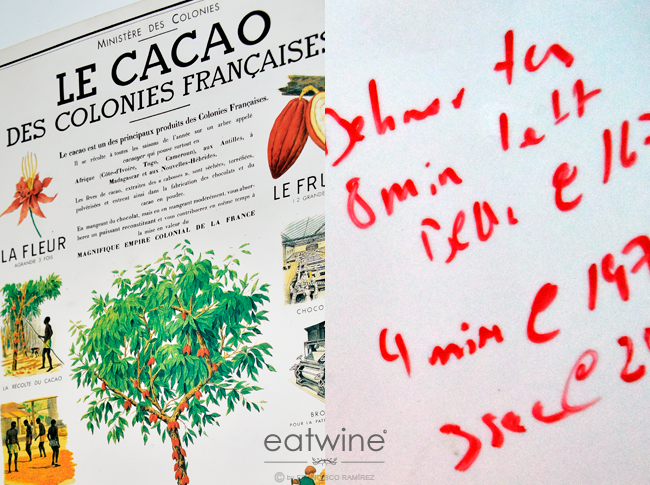
Gerrits has been living in Chile for over two decades during two separate stints from 1993 to 1999 and then in 2003 to present. In between, he lived in Ecuador where he discovered the fascinating world of cacao and chocolate in the rainforest. He worked with the cacao-producing communities for Yachana Gourmet (a direct trade, gourmet chocolate company) and got first hand experience in directly sourcing cacao from small farmers to transform those beans into a finished chocolate product for export. Around that time, he met Robert Steinberg, the co-founder of the outstanding San Francisco-based Scharffen Berger chocolate who was traveling to Ecuador to search for new sources of cacao beans. In particular, Steinberg was on a quest to procure the rare porcelana, a white cacao bean.
Having heard of Mark’s work with cacao producers in the Ecuadorian jungle, he outreached and they set off on epic adventure in search of those highly coverted porcelana beans. They traveled by canoe through Amazonian tributaries, trekking into the forest to meet locals, learn about their cacao, and sample beans. While they never did find them, Gerrits unearthed something equally valuable—a friendship with Steinberg who became his chocolate mentor. He credits Steinberg with teaching him much about cacao and chocolate making; things he employs today with ÓBOLO. As Gerrits points out, “The most significant lesson I learned from Steinberg is about cacao bean fermentation: How to do it properly and how it influences the final taste and quality of the chocolate. “
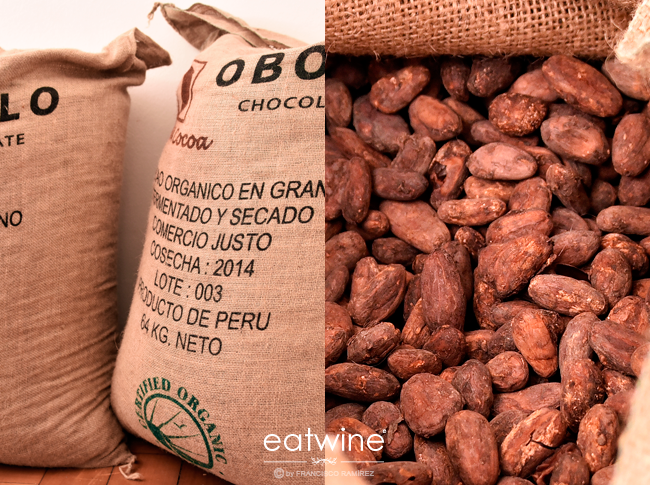
As a chocolate-maker, Mark sources his production from the central Peruvian jungle in “nano-lots”, bringing in several sacs of 64 kilos at a time. He found the organic farm sourcing his beans on a scouting trip to Peru in 2015. He selected them not only for the quality of the beans (flavors, aroma, fermentation, and genotype), but also the co-op’s governance, relationship with producers, and finally social and environmental impact. He has the beans selected, dried, and imported (via ship) to Chile. While this sounds easy enough, dealing with SAG (Chile’s agricultural police), is a huge hurdle no other chocolatero has done locally. Ever. Given the strict limitations on how organic goods can come into the country (Chile is essentially an island and free of many pests found elsewhere in the world), it took significant time, energy, and patience to navigate the red tape to get his dried cacao beans to Santiago.
Perservance, though, paid off. He received his precious cargo and was able to start his venture. Things have gone so well that he took the leap and quit his ten-year job at The Nature Conservancy to fully dedicate himself to ÓBOLO. Currently, he makes three bars: plain, with sea salt from Cahuil, and fresh nibs. He also sells freshly ground chocolate nibs, whole cacao beans, and is evaluating selling the cacao skins in the future for winter-time infusions (tea), given the health benefits of pure cacao.
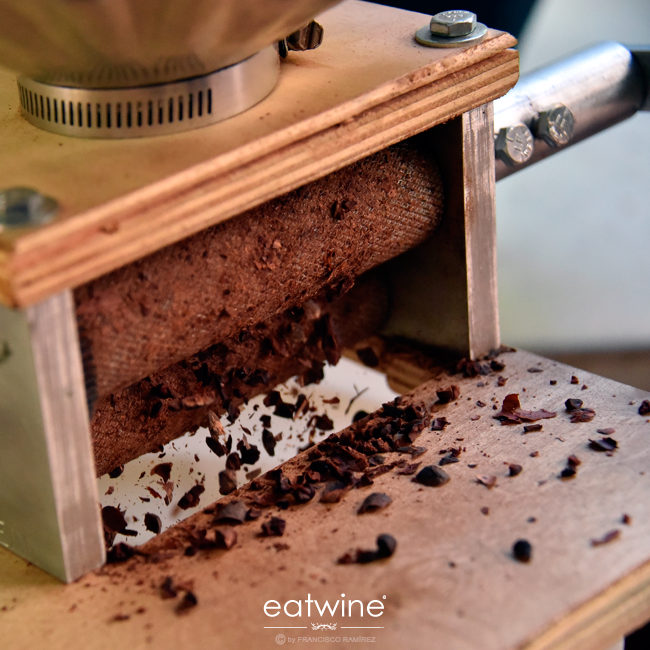
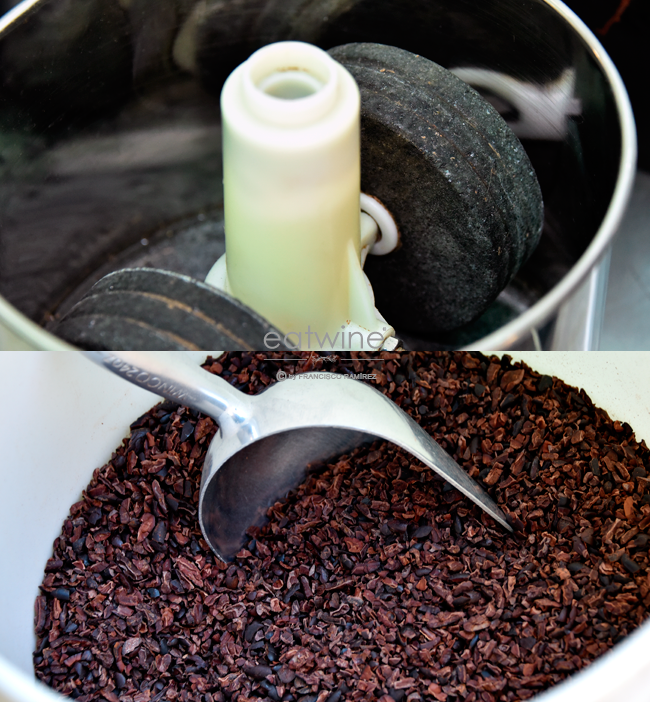
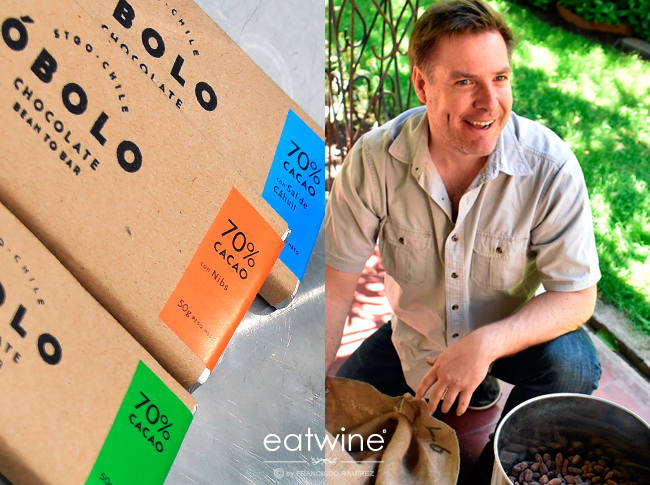
According to Garrits, “Making a bean-to-bar chocolate is difficult. Making a successful business out of bean to bar chocolate is even more difficult. I respect and find inspiration in all of the bean-to-bar chocolate makers around the world who are following their dreams and sharing their passion with others, while trying to make a living out of it.” He also mentions that his goal is to produce a world-class chocolate that can be enjoyed locally in Chile, and put Chile on the chocolate-making map. For the time being, he is focusing on sourcing the beans from Peru and growing his chocolate baby. Down the road, though, he doesn’t rule out single origin bars from Ecuador, Bolivia, and Colombia.
Not long ago, we met with Mark and his wife, Annie, at our home for wine, tapas, and an ÓBOLO (dessert) tasting. During our ramblings on life, food, wine, chocolate and Chile, we discussed if there really are discernable differences between varieties and origins of cacao beans, similar to grape varietals and terroir in wine. Flavor obviously varies not only in the origin (between say Peru, Madasgascar and Java) but can potentially change from year-to-year. To this point, he had just received an importation of the 2015 harvest and is still working on test roasts and batches in order to identify the unique flavor and aromatic profile. We thought a “vertical” chocolate tasting of his two harvests, 2014 and 2015, would be incredibly fun.
While I don’t want to ruin your own impressions of ÓBOLO, because you HAVE to try it, the flavor is brisk and fruity with almost no bitterness or harshness in the aftertaste. It lingers and leaves your mouth clean. We also found some nuttiness in the ending. The mildness of the bar allows some of the gentler flavors of the beans to shine through. This was the first time both my husband and I truly sensed how a chocolate is born from a fruit. Yes, cacao is a fruit.
We’ve tried ÓBOLO with coffee and wine, and for our palates, wine wins every time. Sparkling wine, a variety of reds from Pinot Noir to Cabernet Franc, Carmenere, blends…all worked. This chocolate is truly one of the most wine friendly chocolates out there. Mark cited that many high-end wineries have started pairing their wines with his chocolate, too, for the same reasons. Dark, complex, fruity, low in sugar, it’s the perfect partner for a glass of Chilean red.
The night we got together, Mark had (beforehand) generously “sourced” me some samples of his 70% and 100% chocolate to let my culinary creativity run with ÓBOLO. While I initially had visions of recreating a Pierre Hermé layered chocolate dessert, after assessing options, ÓBOLO is so pure that I decided I had to take the road of least intervention in order to honor it’s flavor profile. That is, I only needed to play with texture. I decided to do a trio: moist classic US-style brownies with the 100% chocolate and the 70% for chocolate covered almonds and truffles. The truffles went in two directions: one nutty & fruity rolled in crushed pistachios and matcha powder; the other, intense and chocolaty rolled in crushed (ÓBOLO) nibs and flaky sea salt from the Argentine Patagonia (similar to Maldon). Both truffles were insanely good. Deep, deep, DEEP flavor. Clean. Fruity. Intense. Nutty. I loved them both, but the nibs-sea salt won (Mark agreed).
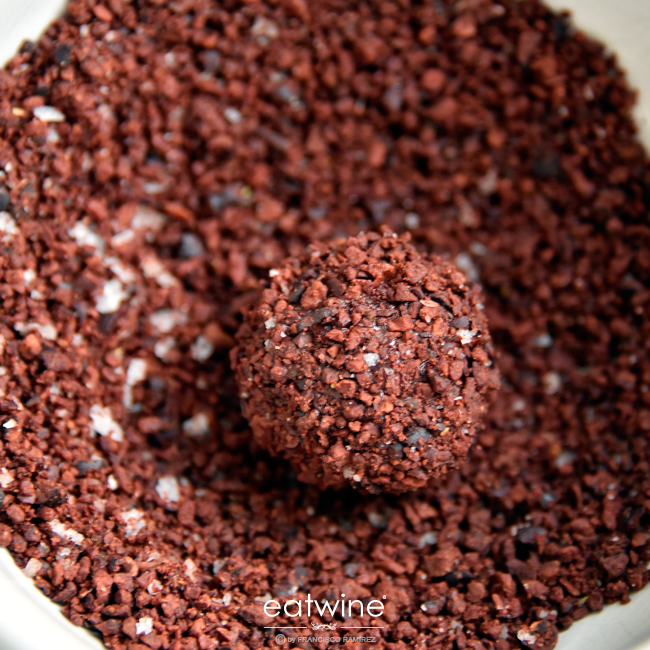

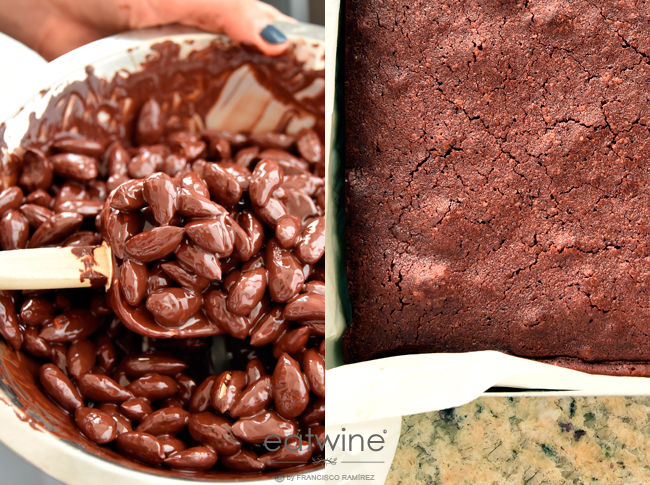
During our evening together, Mark said something that really resonated with my husband and I: “I have always found beauty and peace in observing the expert craftsperson working purposefully on their art and passion. I find it noble, courageous and contributing. I do believe that I have found my craft and passion with chocolate and ÓBOLO.”
We most definitely, too, think he has.
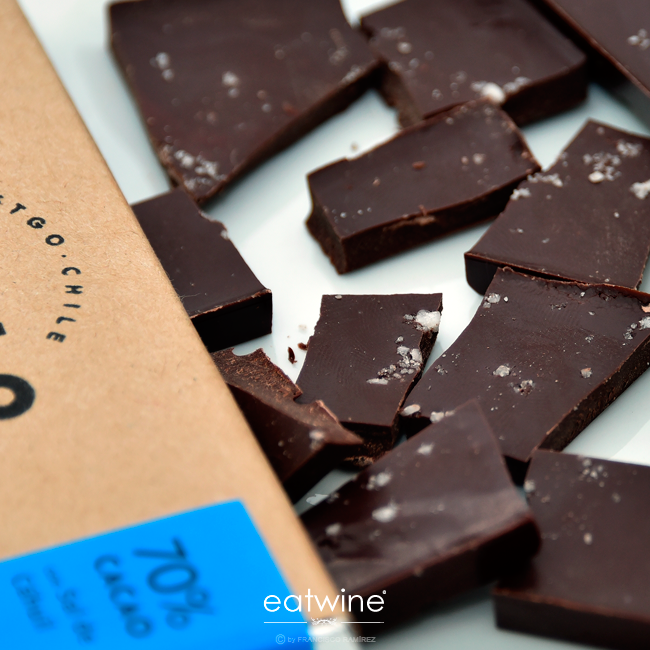
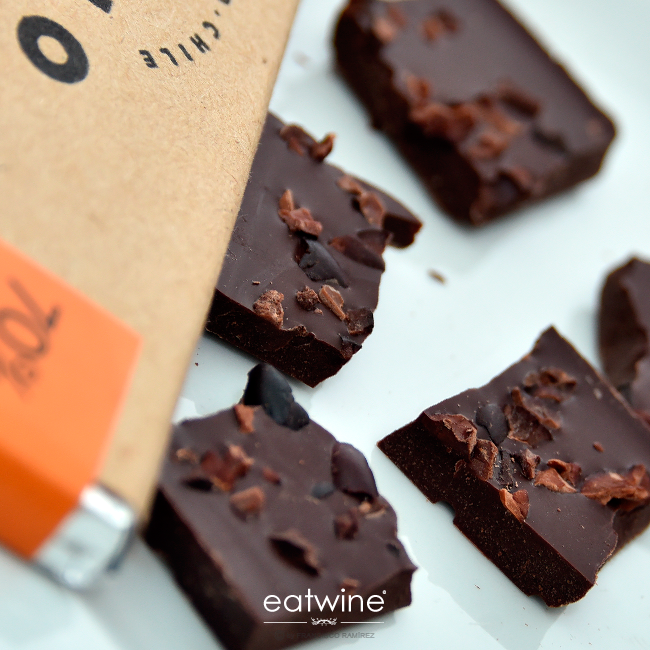
Chocolate Truffles
Makes about 16-18 truffles
These truffles actually get better in flavor the next day. Ideally make 12-24 hours ahead and keep in the frig in a tin, or wax paper-lined plastic container.
For the truffles:
4 cups premium dark chocolate like ÓBOLO (if in the US, Gerrits suggests companies like Rogue Chocolate), broken into small chunks
2/3 cup heavy cream, at room temperature
1/3 cup pistachios, toasted, shelled and pulsed in food processor to a find meal
1 tablespoon matcha powder (available from Asian grocers)
1/2 cup freshly ground cacao nibs
1 tablespoon sea salt (I used flaky crystals from the Argentine Patagonia (Chabut province) similar to Maldon, which would work nicely as a substitute)
In a large saucepan, bring 2 to 3 cups of water to a simmer. Create a warm water bath by placing a heatproof glass or stainless-steel bowl over the saucepan of simmering water. Add the chocolate and heavy cream to the bowl. Mix well with a spatula to combine as the chocolate melts. Be gentle here when tempering chocolate!
Remove the bowl from the heat and transfer the chocolate mixture to a parchment paper–lined loaf pan or shallow bowl and cool completely to room temperature. Place in to the fridge for 90 minutes to solidify.
Using a small melon baller, or your hands, scoop out the truffle mixture and roll into 1-inch balls.
On a plate, place the ground pistachios and roll half the truffles in them, pressing the nuts gently into the surface. Using a sifter (or fine-mesh strainer), dust the truffles with the matcha powder.
Pulse the nibs and sea salt in a food processor to grind to a fine, even meal. Place on a plate and repeat the truffle-rolling process with the other half of the truffles.
Refrigerate until ready to serve.
I suggest letting them sit out at room temperature approximately 20-30 minutes before serving so they are tender in texture when you bite into them. Similar to decanting a wine (which you could do when you get the truffles out of the frig), you fully appreciate the flavors at room temperature. Eating a cold truffle will mute all that gorgeous fruity chocolaty expression.
